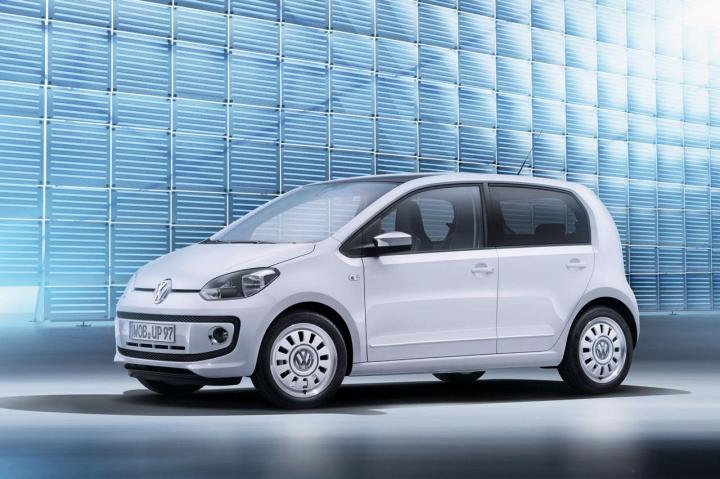
Car companies love to install the powertrains from halo models into more mainstream offerings, hoping to imbue them with performance, and cache. Just look at the outgoing Cadillac CTS-V and its Corvette-derived V8.
This trend is now making its way into the green segment, too. Witness the Volkswagen Twin-Up, a version of VW’s city car packing the powertrain from the hyper-miling XL1, which is set to debut at the 2013 Tokyo Motor Show.
Volkswagen first hinted at the Twin-Up back in February, and it will have its moment in the spotlight when the Tokyo show opens November 20.
According to Autocar, the Twin-Up will feature the same 47-horsepower, 800-cc diesel twin as the XL1, but its electric motor will get a power boost from 27 hp to 47 hp. The lithium-ion battery pack will also increase, from 5.5-kilowatt-hours to 8.6-kWh.
The changes were necessary to compensate for the Up’s extra weight. The hatchback weighs about 900 pounds more than the XL1, and doesn’t have its wind-cheating streamlined shape.
Total system output is 74 hp and 158 pound-feet of torque, channeled through a seven-speed dual-clutch transmission to the front wheels. That’s only enough to get the Twin-Up from 0-62 mph in 15.7 seconds, and to a top speed of 87 mph.
The Twin-Up will reportedly have an electric-only range of 31 miles, at speeds up to 78 mph. According to Automotive News Europe (sub. required), it will return 214 mpg on the U.S. testing cycle.
Volkswagen hasn’t decided whether it will put the Twin-Up into production, so for now buyers looking for a tiny VW with green credentials will have to stick with the all-electric e-Up.
We’ll have more on the Twin-Up, and everything else from the Tokyo Motor Show, in the coming weeks.


